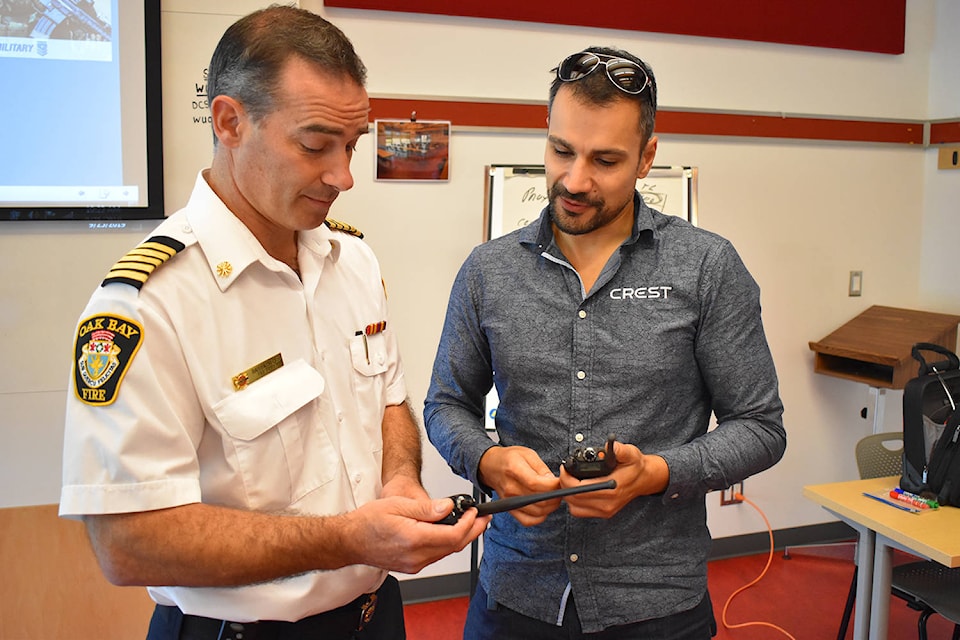On the surface, it looks like a medium-sized suitcase. However, what’s inside the digital vehicular repeater system (DVRS) can save money and ultimately lives.
Fire officials from across Greater Victoria gathered in Central Saanich Wednesday morning to receive training on the DVRS, which roughly amounts to be being a portable WiFi booster that improves digital communication for firefighters while on scene.
Capital Region Emergency Service Telecommunications (CREST) is currently migrating to an all-digital platform and the Project 25 technology presented Wednesday promises to offer many improved system features that will strengthen public and emergency responder safety, not to mention help people in need of assistance.
Following a comprehensive testing and training period, Greater Victoria’s core area went ‘live’ for police agencies in January. Fire agencies in the core (minus the Victoria Fire Department) moved onto the new P25 network over the summer. Peninsula agencies have been testing the new system and are poised to follow.
Taso Barous, a communication technologist with CREST, said communication channels in analogue mode are subject to interference that can make it difficult to receive and transmit information. Digital-mode communication clears up the audio but requires expensive towers and new building techniques among other factors such as distance impair wireless communication.
RELATED: CREST technology goes digital
Wireless public safety networks have been deployed on the premise that an “outdoor network of high sites” would provide the necessary coverage, according to a background briefing provided at Wednesday’s event. But this approach leaves many individuals working in high-rise office buildings, shopping malls, hospitals, government buildings and tunnels with severely limited coverage for emergency services. To fill this in would be impractical economically.
This is where the DVRS kicks in noted Barous. “You bring the coverage with you.”
The distance a DVRS can boost a signal depends on a number of factors, including terrain, vegetation and buildings. It costs about $20,000, which is far below the cost of a wireless tower.
According to the briefing, all emergency and public service agencies in the Capital Region support the transition towards Project 25 as part of CREST’s technology infrastructure, which includes 30 transmission sites, more than 50 in-vehicle repeaters, and 2,500 mobile and portable radios.
Preparation to launch the Project 25 system in core communities started in 2017. In 2018, new infrastructure/transmission sites appeared in High Rock Park in Esquimalt and in View Royal to fill coverage gaps.
